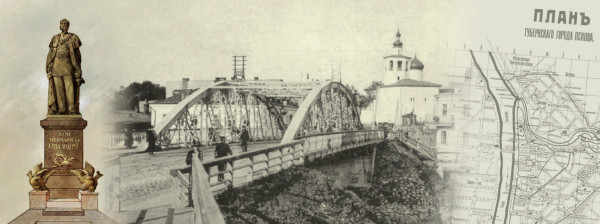City of Pskov
The collection marks the 1120th anniversary of the foundation and the main historical stages in the development of the city of Pskov. It includes official and archival documents (documents of the Ministry of Internal Affairs, the Ministry of Education, diplomatic correspondence, etc.), periodicals, modern and pre-revolutionary monographic studies, thesis, cartographic (plans, projects, etc.) as well as visual materials.
The documents illustrate the foundation and development of the city of Pskov from the first half of the 12th century, from the reign of Vladimir Monomakh’s eldest grandson, Prince Vsevolod-Gabriel, canonized, to the present day. They cover major events in the history of Russia, in which residents of the ancient city as the main outpost on the western border became active participants. The entire history of medieval Pskov is a history of continuous wars, enemy raids, sieges and military campaigns.
Thus, the section devoted to the role of Pskov in the foreign policy of the Russian state contains diaries, memoirs and other archival materials about its role in the Livonian War (1558–1583) and the siege of the city in 1581 by the Polish king Stefan Batory. If from the moment of its creation, according to legend, with the light hand of Princess Olga, Pskov was part of the ancient Russian state - Kievan Rus’, then already in the 12th century it came under the jurisdiction of Veliky Novgorod. Only two centuries later, the briefly independent Pskov Veche Republic flourished, until it became part of the unified Russian state (1510). Some of the archival documents describe the state of the city’s economy, trade and agriculture, the construction of railway lines, and the development of communications.
Together with the Russian army and the Russian people, the residents of Pskov resisted the invasion of Napoleon's French troops and participated in the events of the First World War. It was here that Emperor Nicholas II signed his abdication from the throne in May 1917, as evidenced by a whole collection of various documents.
One of the largest sections of the collection is dedicated to the city of Pskov during the Great Patriotic War. It includes journals of the border detachment, documents and memories of participants about the hostilities and liberation of Pskov, as well as video recordings of conversations with residents of the city - participants in military operations and home front workers.
The collection also includes documents related to the development of science, education and the cultural sphere in general, spotlighting the Christian antiquities of Pskov, especially revered saints, architectural monuments and fresco monumental painting, restoration work, etc.






